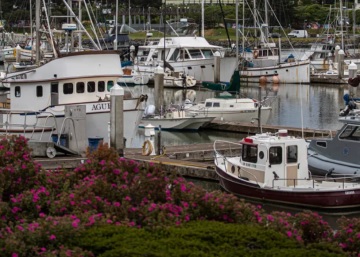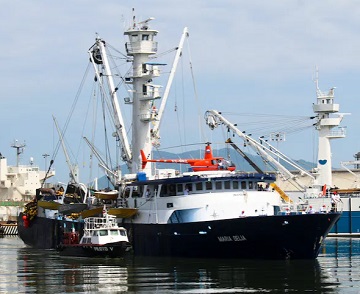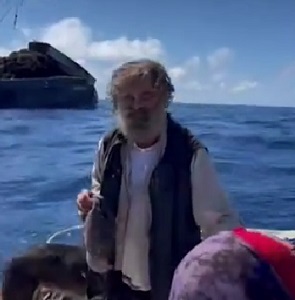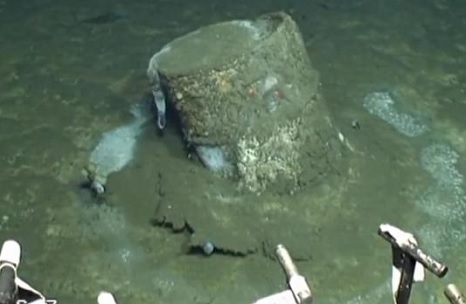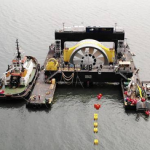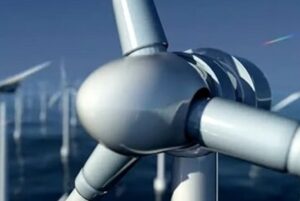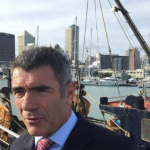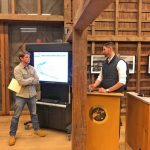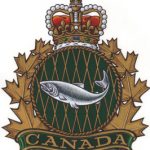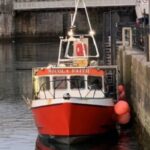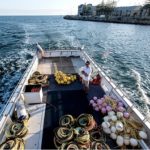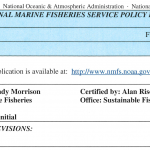Tag Archives: Pacific Ocean
Seal overpopulation having ‘significant and damaging impact’ on Canadian fish stocks: report
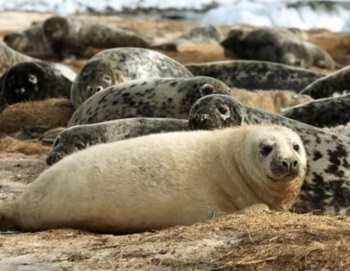 Canadian parliamentarians are warning that seal populations pose a danger to fish stocks and are upsetting marine ecosystems in the Pacific, Arctic and Atlantic oceans. A bipartisan report from the House of Commons standing committee on fisheries and oceans says urgent measures are needed from the federal government and the Department of Fisheries and Oceans, including an increase in the humane seal harvest. “This report’s objective is to draw the attention of DFO, relevant departments and the Canadian government to important observational and empirical evidence that the overpopulation of pinnipeds on Canada’s three coasts is having a significant and damaging impact on the health and conservation of fish stocks and is creating an imbalance in our marine ecosystems,” the study concludes. more, >>click to read<< 18:00
Canadian parliamentarians are warning that seal populations pose a danger to fish stocks and are upsetting marine ecosystems in the Pacific, Arctic and Atlantic oceans. A bipartisan report from the House of Commons standing committee on fisheries and oceans says urgent measures are needed from the federal government and the Department of Fisheries and Oceans, including an increase in the humane seal harvest. “This report’s objective is to draw the attention of DFO, relevant departments and the Canadian government to important observational and empirical evidence that the overpopulation of pinnipeds on Canada’s three coasts is having a significant and damaging impact on the health and conservation of fish stocks and is creating an imbalance in our marine ecosystems,” the study concludes. more, >>click to read<< 18:00
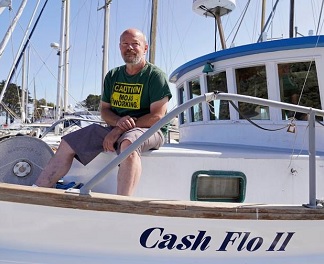
Warming rivers in US West killing fish, imperiling industry
Salmon fisherman Mike Hudson sits on the bow of his boat at the Berkeley, Calif., Marina on Thursday, July 22, 2021. Baby salmon are dying by the thousands in one river and an entire run of endangered salmon could be wiped out in another. The plummeting catch has led to skyrocketing retail prices for salmon, hurting customers who say they can no longer afford the $35 per pound of fish, said Hudson, who has spent the last 25 years catching and selling salmon at farmers’ markets in Berkeley. “An extreme set of cascading climate events is pushing us into this crisis situation,” said Jordan Traverso, a spokeswoman for the California Department of Wildlife and Fish. 14 photos, >click to read< 10:03

One of nature’s miracles: the salmonid species life cycle
This article describes the amazing way these species begin their lives in clear flowing creeks and streams near the coast, anywhere from the northwest to Northern California, travel miles downstream to enter the salty waters of the Pacific Ocean, mature for a number of years while traveling great distances, and then return to their home stream’s birthplace. At the beginning, the following verse from a popular illustrated children’s text titled Salmon Stream sets the scene: The egg of a salmon, born to travel, Hides in the nest of rocky gravel, Far beyond the shady pool,,, >click to read< 20:02
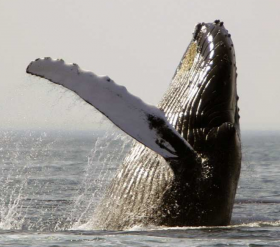
Feds Tap 300,000 Square Miles of Pacific for Humpback Whales
The proposed rule is the result of a settlement with the National Marine Fisheries Service, who were sued last year for not following through on a 2016 plan to designate two groups of Pacific Ocean humpback whales as endangered and a third group as threatened. The Center for Biological Diversity, joined by Turtle Island Restoration Network and the Wishtoyo Foundation, filed a federal lawsuit in the Northern District of California claiming the lack of action by the Trump administration violated the Endangered Species Act. >click to read< 16:25
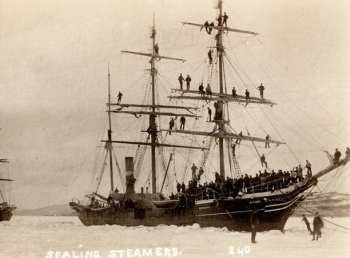
The real Sea Wolf: Russians try to tame ‘Sea Wolf’ Captain Alexander MacLean (Part 2)
After being caught almost red-handed poaching seals from a Russian island, Captain MacLean was summoned, along with most of his crew, to appear aboard the Russian warship Alert. This he complied with, but once aboard the Russian warship, a fight broke out and eventually the Americans were overpowered. A prize crew was then sent to the schooner. According to MacLean, “the American flag was floating at the masthead, and as the halyards were hammed and cut, it was no easy matter to get down. Several attempts were made but were unsuccessful. >click to read< 12:06
The real Sea Wolf: Captain Alexander MacLean (Part 1) – >click to read<
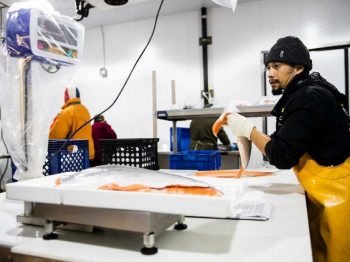
King salmon arrives in stores, commanding royal prices; relief could come soon
King salmon, once as ubiquitous as burgers in backyard Bay Area barbecues, has commanded astonishingly high prices in recent years,,, Since the 2019 season opened on May 1, supply has been very limited, so prices have remained steep, reaching as high as $40 a pound in San Francisco.,,, That should start to change on Thursday, when 200 more miles of coast will open to commercial salmon fishing,… there will likely be more salmon on the market this summer is because some crab boats are planning to go out for salmon fishing, because the Dungeness crab fishery closed several months early as part of a settlement,,, >click to read<21:54

Wisdom the albatross: World’s oldest known bird lays another egg
The world’s oldest known bird is set to become a mother again – after raising at least 30 other youngsters. Wisdom the albatross has laid another egg at her nest site in Midway Atoll National Wildlife refuge on a tiny island about 1,200 miles northwest of Hawaii, in the Pacific Ocean. Biologists believe Wisdom is at least 68 years old, forcing them to re-evaluate the age which they expected albatrosses to live to. Albatross mate for life, but will recouple if a partner dies. The current age of her mate Akeakamai is not known, but the pair have been together since 2006. >click to read<21:39

Death by Killer Algae
They didn’t think much of the first dead whale. Dwarfed by the rugged cliffs of Patagonia’s high green fjords, the team of biologists had sailed into a gulf off the Pacific Ocean searching for the ocean’s smaller animals, the marine invertebrates they were there to inventory. That night, while hunting for an anchorage in a narrow bay, the team spotted a large, dead whale floating on the water’s surface. But for the biologists, death—even of such an enormous animal—didn’t seem so unusual. Not so unusual, that is, until they found the second whale, lying on the beach. And a third. And a fourth. In all, they found seven in that bay alone. Over the next day, they counted a total of 25 dead whales in the fjord. click here to read the story 15:42
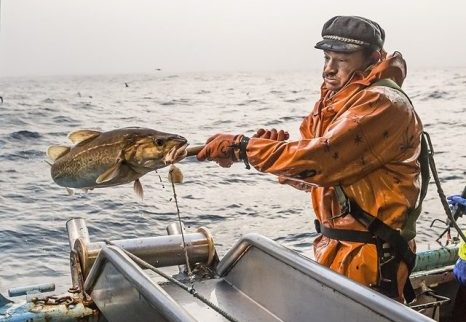
Pacific Ocean ‘blob’ appears to take toll on Alaska cod
Gulf of Alaska cod populations appear to have nose-dived, a collapse fishery scientists believe is linked to warm water temperatures known as “the blob” that peaked in 2015. The decline is expected to substantially reduce the Gulf cod harvests that in recent years have been worth — before processing — more than $50 million to Northwest and Alaska fishermen who catch them with nets, pot traps and baited hooks set along the sea bottom.,,, Scientists don’t ascribe the blob specifically to climate change. Gulf of Alaska temperatures — influenced by atmospheric conditions such as wind strengths — have always fluctuated over time. But researchers have never before tracked such an extreme heat wave that spread across such distances and penetrated to such depths. click here to read the story 11:52

The Great Pacific Migration of Bluefin Tuna
Shortly after their first birthday, Pacific bluefin tuna (Thunnus orientalis) complete an impressive feat. From the spawning grounds in the Sea of Japan where they were born, the young tuna embark on a journey over 5,000 miles (8,000 km) long, across the entire Pacific Ocean to the California coast where they spend several years feeding and growing. Until recently, scientists believed only a small portion of juvenile tuna made the journey, but several new studies show that may not be the case—in some years the majority of tuna aged between one and three participate in the trans-Pacific migration. click here to read the story 14:53
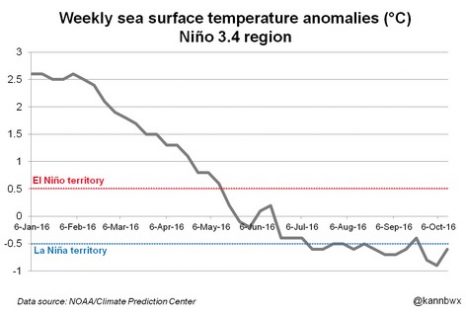
Global Cooling? Stronger-Than-Expected La Niña May Be Brewing
Many have doubted forecasts calling for the onset of the first La Niña in almost five years, believing that its failure to materialize in convincing fashion last summer – as originally predicted – means that it may be off the table for 2016-17. But in recent weeks, the oceans and atmosphere have been pulling everything into place to facilitate a potentially stronger La Niña than previously thought, so those who follow commodities markets may want to take a second look. Cooling sea surface temperatures in the key Niño 3.4 region have touched the levels of early 2012. –Karen Braun, Reuters, 20 October 2016 Read the rest here 14:39
‘Warm blob’ in Pacific Ocean linked to weird weather across the US

Pacific Ocean warms up along Oregon Coast, drawing unusual visitors
 “As far as climate scientists know, it could be a weird aberration or it could very well be something that could stick around for a while,” he said. Or as Northwest Fisheries Science Center Director John Stien put it, “We’re seeing some major environmental shifts taking place that could affect the ecosystem for years to come.” Nate Mantua, another NOAA scientist, said the conditions are so unusual that he believes they won’t be long-lasting. Read the rest here 07:37
“As far as climate scientists know, it could be a weird aberration or it could very well be something that could stick around for a while,” he said. Or as Northwest Fisheries Science Center Director John Stien put it, “We’re seeing some major environmental shifts taking place that could affect the ecosystem for years to come.” Nate Mantua, another NOAA scientist, said the conditions are so unusual that he believes they won’t be long-lasting. Read the rest here 07:37






